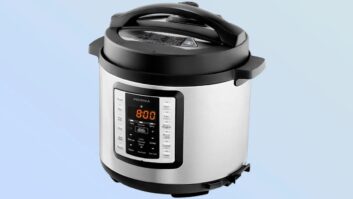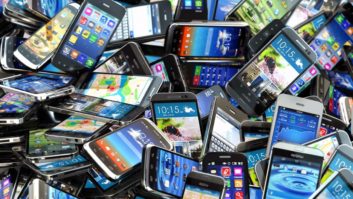Consumers with iTunes-tagging HD Radios can tag songs broadcast by any HD Radio station that transmits song and artist title in its program service data (PSD) signals, but consumers will get the best results from a large subset of digital HD Radio stations that send an additional iTunes-specific code that identifies the song being broadcast, radio-industry executives said.
The same is true of iTunes-tagging analog-FM radios equipped to display song metadata sent by analog stations equipped with Radio Data System (RDS) technology, which was launched in the early 1990s in the U.S. to transmit low-bit-rate data along with analog audio, said Jeff Littlejohn, distribution development executive VP at the Clear Channel broadcast group.
iTunes-tagging radios make it easier for consumers to download a song to their PC after hearing it on the radio. It works like this: Consumers “tag” a song broadcast by an HD Radio station or an analog FM radio station. At the touch of a button, an iPod docked with the radio stores metadata sent by the station as well as a Unique File Identifier (UFID) code that identifies the specific version of the song that was broadcast. When an iPod is later synced with a PC, the PC’s iTunes software automatically displays tagged songs’ metadata in a “tagged” playlist for previewing, buying and downloading.
Without a UFID code identifying the specific version of the song heard, consumers could be presented with multiple versions of the same song when they try to download the broadcast song through the iTunes store, said executives with HD Radio developer iBiquity and radio group Clear Channel.
The same is true of the RDS-based tagging technology in Microsoft’s Zune MP3 player, which incorporates analog FM tuner and Wi-Fi to download songs without using a connected PC. Microsoft, however, uses a different set of UFID codes developed by Mediabase, a company that monitors radio station airplay for music labels. The Mediabase codes will also be adopted by other online music stores in the future, said Littlejohn.
Tagging songs identified by a UFID code is the best way to go, Littlejohn and HD Radio inventor iBiquty said. Although tagging radios are capable of capturing metadata from stations that don’t send a unique identifying code, multiple versions of the song, and not the specific version that was broadcast, could appear on the PC screen if the iTunes store sells multiple versions of the song, said Littlejohn, as did iBiquity VP Jeff Jury.
“If you send only artist and title information, it will look for the closest match,” Littlejohn explained. “It could be the karaoke version, the live version or the studio version. The UFID code matches the song to a specific item in the Apple catalog so you don’t have to guess.” Without the UFID code, additional versions could also appear on the iTunes menu. Many songs of the same name, Littlejohn noted, have been performed by multiple artists and could pop up along with the intended song. Songs with different titles could pop up if the transmitted artist name was, for example, Beyonce instead of Beyonce with Jay-Z.
To date, multiple tabletop home radios, aftermarket autosound head units, and Yamaha-brand A/V receivers feature HD Radio with iTunes tagging. Pioneer plans two autosound head units with RDS-based iTunes tagging. Those two models also accept an outboard HD Radio tuner equipped with iTunes-tagging technology.
Among around 1,600 FM HD Radio stations, most deliver song and artist metadata, and about two-thirds of those transmit iTuned-tagging UFID codes, iBiquity’s Jury said. They transmit UFID codes on their multicast channels as well.
Another 200 HD Radio stations are AM stations that could send UFID codes if they broadcast music.
In the analog domain, more than 450 analog FM stations, almost all of them Clear Channel stations, transmit tagging codes, said Littlejohn. Clear Channel sends Apple and Mediabase UFIDs, he noted.
More analog FM stations than that transmit artist and song metadata that can be tagged, but it’s not clear how many stations do so because no one compiles such information, Littlejohn said. Some stations simply broadcast call letters or the station’s promotional name, he noted. About 75 percent to 80 percent of big-market analog-FM stations transmit RDS data, he noted. The percentage drops in smaller markets.
In the United States, there are more than 13,500 radio stations.












